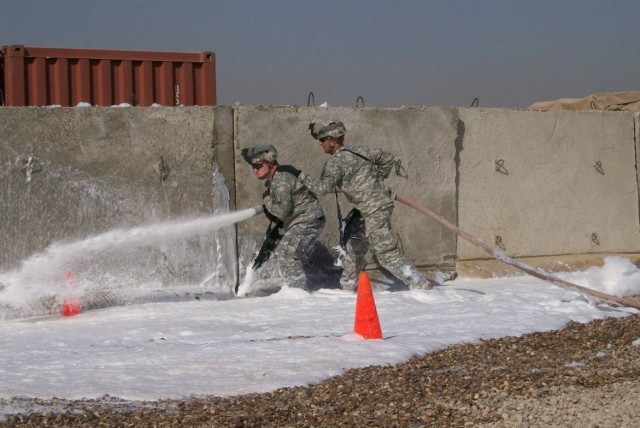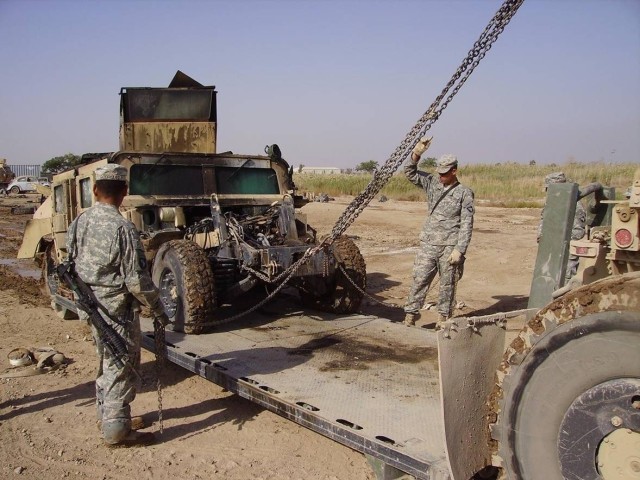CAMP LIBERTY, Iraq (Army News Service, Nov. 26, 2007) - When the Bravo Company 'Mad Bulls' of the 526th Brigade Support Battalion arrived in theater, the recovery-section and gun-truck platoon gained a new piece of equipment, a combat fire truck, and a firefighting mission to go with it.
The unit was tasked with providing quick response, area-support combat firefighting and recovery of all battle-damaged vehicles within the 2nd BCT, 101st Airborne Division area of operation.
"Although combat firefighting is new to the maintenance world, it is necessary to efficiently recover damaged vehicles in the quickest amount of time, reducing the number of Soldiers on ground pulling security." said Chief Warrant Officer 2 Byrin Wheatley, officer in charge of the recovery section, Co. B, 526th Brigade Support Bn.
A typical Humvee can burn for up to six hours and a Stryker vehicle can burn up to 16. While a vehicle burns, there is also the risk of ammunition left in the vehicle exploding.
A regular Load Handling System truck hauls flat racks and supplies, and the firefighting LHS has been modified with a rail system to safely maneuver Soldiers. A 1,600-gallon tank serves as the main tank and another 400-gallon tank is used for mixing water and the foam-liquid fire-extinguisher solution. One pump fills the mixing tank from the main tank, and a second sends water pressure through the hose.
Combat firefighting involves two, two-person teams. The two primary firefighters hold the hose on the ground and control the water and foam used to fight the fire, using battle-proven tactics and procedures.
The other two Soldiers remain on the LHS and control the pumps, mixing the solution and providing security for personnel on the ground. They also watch the fire and alert the primary firefighters of unseen dangers. Each Soldier is an Eagle First Responder, the 101st Airborne Division's combat-lifesaver designation, which is important for the safety of the team.
Staff Sgt. Robert Hamilton and his fire team from 299th Forward Support Bn., 2nd BCT, 1st Inf. Div., conducted the training, which taught Soldiers how to react when extinguishing operations begin, and that fires create their own weather condition and can change the situation in the blink of an eye.
Situational awareness is especially important to the safety of the team. Advanced recovery-operations skills are essential because they are not outlined in manuals on how to recover destroyed vehicles. Convoy experience is also important - the more road time a Soldier has creates better situational awareness and understanding of how to handle a vehicle outside the wire.
The new firefighters were eager to take on the challenge: "It was great cross-training outside our (military occupational specialty)," said Pvt. Tyler Piper.
(Staff Sgt. Jeri Pihlaja works for the 526th Brigade Support Battalion Public Affairs team.)




Social Sharing